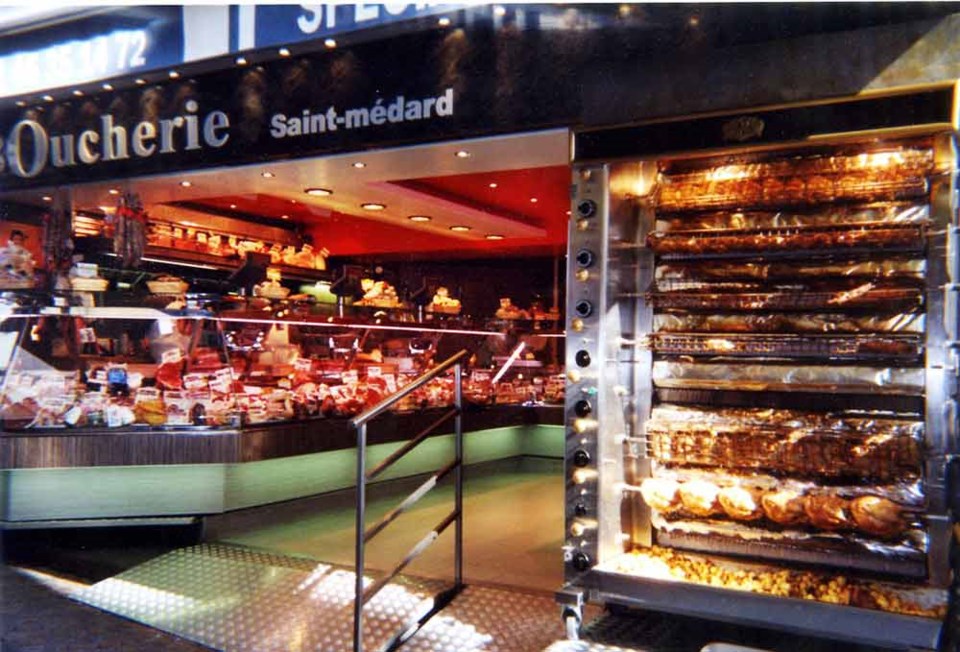The line stretches well over 50 metres. Parisians, not always the most patient, wait for up to 30 minutes for what some consider to be the finest croissants in the city. That is the sort of declaration that could lead to a duel-baguettes from five paces. Still, the smell of those freshly baked croissants, not to mention the pains au chocolat and ficelles, is wafting through the air, and it is, frankly, as intoxicating as the nose of a vintage 1959 Cheval Blanc.
It is worth the wait. The croissants don't make it more than 50 metres from the boulangerie. Melt in your mouth-sweet butter will do that-and soft and flaky, the croissants never had a chance. They are devoured within seconds.
It's Sunday's weekly open market on the fabled Rue Mouffetard, the cobblestoned, quaint (not some resurrected urban kitsch) passageway where Julia Child found all imaginable ingredients for her feasts. Where, in fact, the film Julie and Julia, re-enacting Child's gourmet days in Paris, was partially shot a few years ago. And while we're name-dropping, where James Joyce finished writing his Ulysses tome, where Ernest Hemingway spent four raucous years during the Roaring '20s, where the legendary French poet Paul Verlaine took his last breath-and what a rich one it must have been.
It's not hard to fathom why the aforementioned settled here. Sustenance and inspiration galore are provided on Rue Mouffetard, nestled in the Latin Quarter, or, more specifically, in the Gobelins, a five-minute jaunt from the Sorbonne and Pantheon. The location of one of Paris's grandest and oldest markets (its roots go back to 1200), the street not only boasts the best croissant I ever inhaled at Mme. Morange's Le Fournil de Mouffetard, but also the best of pretty much every other food and liquid I have ever digested or quaffed. Such as the Cantals, crottins de chevre and pepper-encrusted sausages at Fromagerie Patrick Veron; the foie gras at Aux Produits et Saveurs d'Auvergne; the roasts at Boucherie C. Rimasson's Viandes du Limousin; the tantalizing barbecue chicken and potatoes, frying and bubbling in the fat of the former, at Boucherie Saint Medard; the oysters and langoustines at Poissonnerie Quoniam; the Cote Roties and Chateauneuf de Papes at Le Repaire de Bacchus; the Bandol rosees at La Fontaine aux Vins; the . . . mmm . . . chocolate truffles at Nicolsen Artisan Chocolatier; the appropriately billed L'Orgasme Glace at Gelati d'Alberto; and the Java des Temples coffee brew (to jump-start the day) from Indonesia at Brulerie des Ternes.
And it's not just French delicacies. The street offers a rich sampling of Greek, Lebanese, Japanese, Chinese and Portuguese delights, as well. I could go on about the best pear I ever munched at the market, or the grapes and tomatoes there. But it would be so wrong to tantalize you further.
True, Paris is the City of No Bad Food, but the ante is upped considerably here. The street is thick with inviting bistros, but several restos have to rate as world-class and yet are moderately priced: the magnificent molecular cuisine at Chez Lena & Mimile and the traditional but inspiring Le Refuge du Passe, with its tasteful homage to French film classics serving as decor, are musts.
And for all you party people, the street is filled with tiny bars (and cheerfully boisterous patrons) that stay open until the first croissants are baked the following morning. Hell, there is even a retro bowling alley for your late-night thrills.
There is also a dry cleaner to remove all those wine and foie gras stains from your freshly purchased Paris garb.
Apparently, Rue Mouffetard's beginnings can be traced to an ancient Roman theatre on the Place de la Contrescarpe at the foot of the street (where free massages are offered on weekends), but its character is decidedly more Gallic. According to the lore, the soul of the street was retained by city fathers who managed to resist Baron Haussmann's dream to create boulevards during the reign of Napoleon III.
Most of the buildings on the street date from the 17th century. The building that held the apartment we rented was built in 1650, but, mercifully, the plumbing was 21st-century. Yes, there are hotels in the area, but, frankly, if you're going to immerse yourself in a marketplace, you want a kitchen to prepare your feasts, a terrace to partake of them and a bedroom to sleep them off.
Should you wish to work off some of that weight, a spirited walk of an hour will take you to the Grand Palais. And a mere 45-minute saunter takes you to the Musee de l'Orangerie, where you can sit and gaze at Monet's hypnotic, Impressionist water-lily panels for hours.
Continue past the Palais Royal for another 10 minutes, and you'll come to the Champs Elysees, and the long line you spot close to the Arc de Triomphe is not for a museum, but rather for the five-storey shrine that is the Louis Vuitton world headquarters, where pilgrims come from far and wide to drool over designer handbags and frocks.
For shorter hikes, 10 minutes from Mouffetard is the Notre Dame Cathedral, while a half-hour takes you to the Louvre or the charming Place des Vosges and Marais, home to the Picasso Museum.
And having taken in all this culture, a 20-minute march will take you to a couple of the great gazing/grazing bistros, La Coupole on Boulevard Montparnasse and Les Deux Magots by St. Germain des Pres.
But, at the end of the day or, for that matter, at the beginning of the day, you just may not have the urge to stray too far from Rue [email protected]



